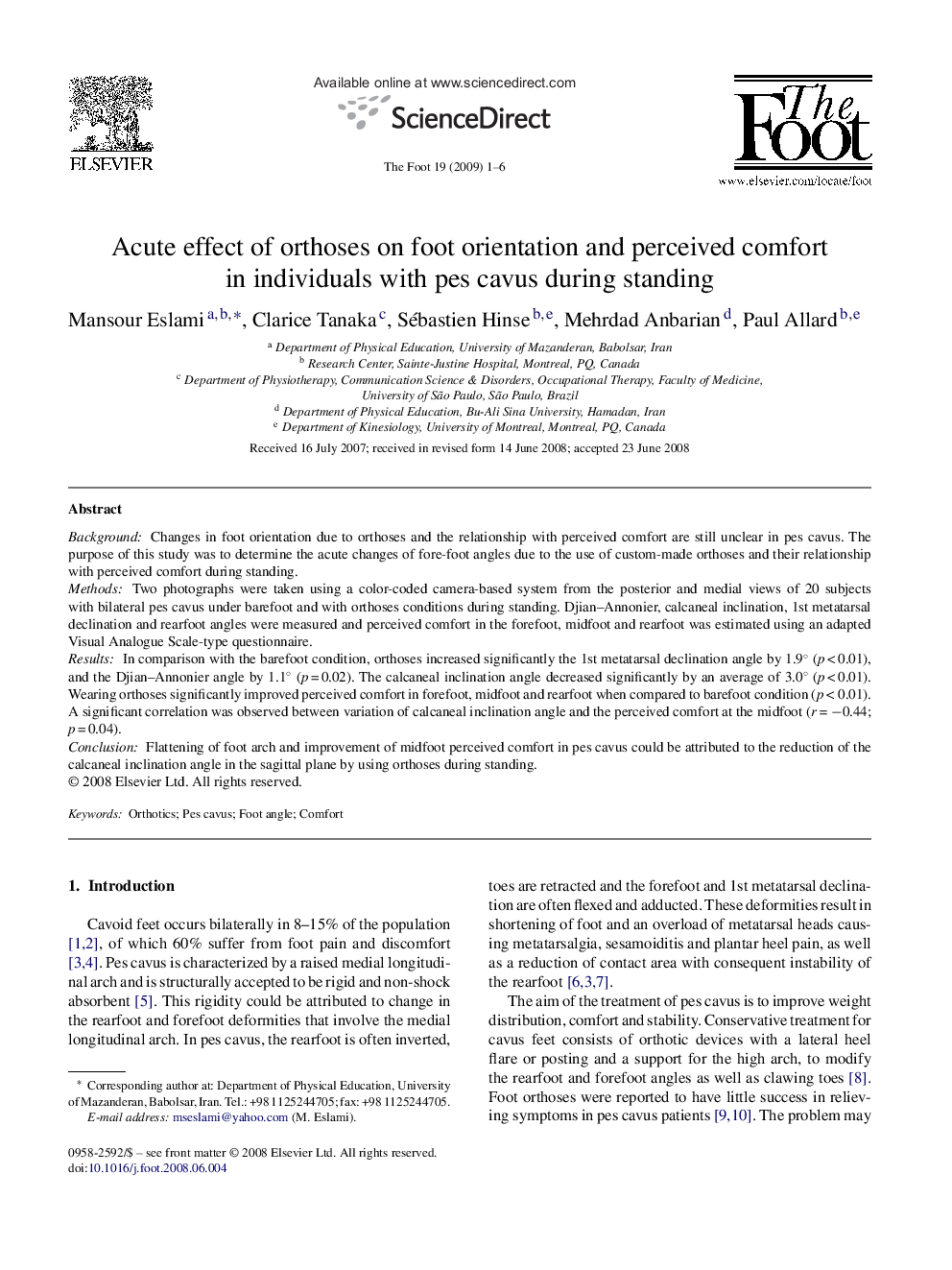| Article ID | Journal | Published Year | Pages | File Type |
|---|---|---|---|---|
| 2711419 | The Foot | 2009 | 6 Pages |
BackgroundChanges in foot orientation due to orthoses and the relationship with perceived comfort are still unclear in pes cavus. The purpose of this study was to determine the acute changes of fore-foot angles due to the use of custom-made orthoses and their relationship with perceived comfort during standing.MethodsTwo photographs were taken using a color-coded camera-based system from the posterior and medial views of 20 subjects with bilateral pes cavus under barefoot and with orthoses conditions during standing. Djian–Annonier, calcaneal inclination, 1st metatarsal declination and rearfoot angles were measured and perceived comfort in the forefoot, midfoot and rearfoot was estimated using an adapted Visual Analogue Scale-type questionnaire.ResultsIn comparison with the barefoot condition, orthoses increased significantly the 1st metatarsal declination angle by 1.9° (p < 0.01), and the Djian–Annonier angle by 1.1° (p = 0.02). The calcaneal inclination angle decreased significantly by an average of 3.0° (p < 0.01). Wearing orthoses significantly improved perceived comfort in forefoot, midfoot and rearfoot when compared to barefoot condition (p < 0.01). A significant correlation was observed between variation of calcaneal inclination angle and the perceived comfort at the midfoot (r = −0.44; p = 0.04).ConclusionFlattening of foot arch and improvement of midfoot perceived comfort in pes cavus could be attributed to the reduction of the calcaneal inclination angle in the sagittal plane by using orthoses during standing.
